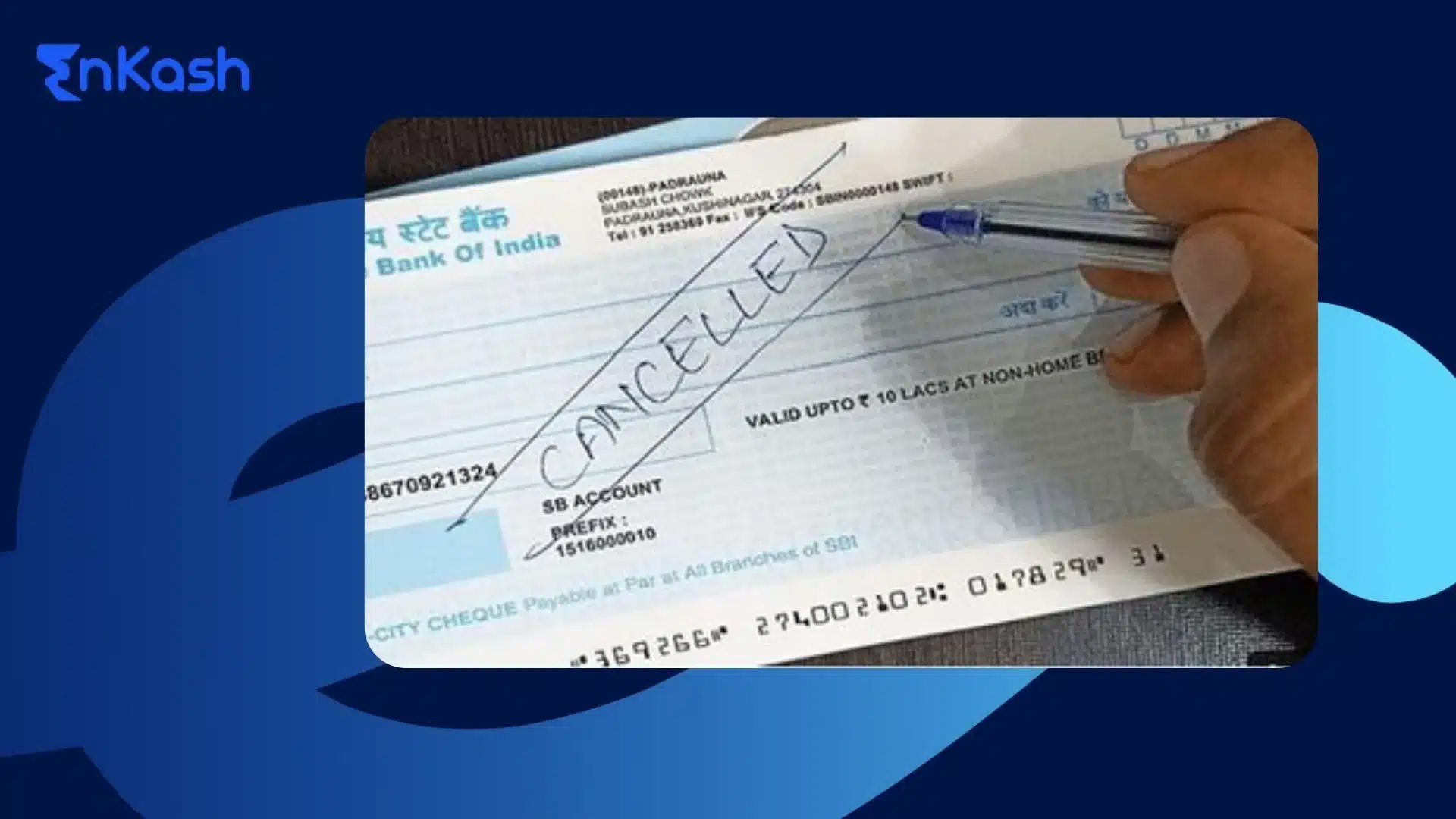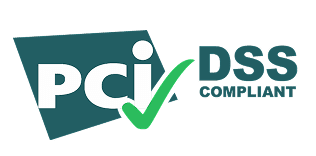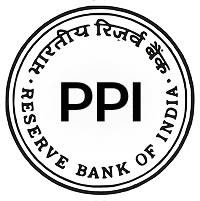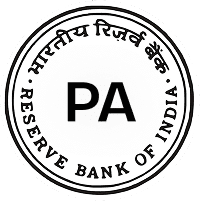Introduction
Cancelled cheques are among the most frequently requested documents in India’s KYC and onboarding processes, yet many people remain uncertain about what they are or how to provide them safely. This confusion often leads to delays in account opening, loan approvals, and EPF transfers. Even worse, confusing a cancelled cheque with a signed blank cheque can expose you to fraud and result in rejected applications.
This comprehensive guide explains what a cancelled cheque is, why organisations need it, how to prepare one step-by-step, the standard format, key differences from blank cheques, common mistakes to avoid, and essential safety tips. By the end, you’ll be able to submit cancelled cheques confidently every time.
What is a Cancelled Cheque?
A cancelled cheque is a regular cheque leaf from your chequebook with “CANCELLED” written across it in bold letters. Think of it like showing your driving license to prove your identity; you’re not actually driving anywhere, but the document contains all the necessary information someone needs to verify who you are. A cancelled cheque works the same way for your bank account details.
This simple document deactivates the cheque for payment purposes while keeping all important printed information visible. Your bank’s name, branch details, IFSC code, and account number remain clearly displayed, but nobody can withdraw money from your account using this cancelled cheque.
Many people worry that cancelling a cheque might affect their account status or indicate a problem. This concern is unfounded. You’re simply preparing a verification document. Your account operations continue normally. Writing ‘CANCELLED’ on unused cheque leaves for verification does not affect your account. The cancelled cheque becomes your safe method to share banking information with banks, employers, and government agencies that accept it as valid proof of your account details.
Why is a Cancelled Cheque Required?
Organisations request cancelled cheques to verify your bank account details safely. They need confirmation that you actually own the account you claim to have, and a cancelled cheque provides this proof without giving them access to your money.
Common Situations Requiring Cancelled Cheques:
- Banking Operations: Banks require cancelled cheques when you open new accounts, link existing accounts, or set up automatic transfers between accounts. The cancelled cheque confirms your banking relationship with other institutions.
- Loan Applications: Lenders need to verify where they should deposit approved loan amounts and set up EMI deductions from your account. Your cancelled cheque provides the exact account details they need for these transactions.
- Investment Accounts: Mutual fund companies and demat account providers request cancelled cheques during account opening to process redemptions and dividend payments. Stock market transactions require verified banking information.
- EPF Transfers: When you change jobs, your new employer needs your bank details to transfer your provident fund. The EPFO uses your cancelled cheque to verify the correct account for PF settlements, preventing money from going to the wrong accounts.
- Employment: Employers request cancelled cheques during joining formalities to set up payroll systems and ensure your salary reaches the right account every month.
- Insurance: Insurance companies ask for cancelled cheques when processing claims to transfer claim amounts directly to your verified account.
Step-by-Step: How to Cancel a Cheque
Step 1: Prepare Your Materials
Take out a blank cheque leaf from your chequebook. Ensure it is clean and undamaged. Torn or stained cheques look unprofessional, and organisations may not accept them
Step 2: Draw Parallel Lines
Draw two parallel lines across the middle of the cheque from the left edge to the right edge. Keep them straight and visible. While you can draw them horizontally or diagonally, horizontal lines work better.
Step 3: Write “CANCELLED”
Write “CANCELLED” in bold capital letters between the two lines. Press down with your pen so the writing shows up clearly. Some people write it multiple times for extra clarity, which is perfectly acceptable.
Step 4: Leave Everything Else Blank
This is crucial: Don’t write the date, payee name, or any amount. Most importantly, don’t sign the cheque.
Step 5: Quality Check
Before submitting, verify that “CANCELLED” is clearly visible, the cheque leaf looks clean and professional, and all printed information (account number, IFSC code, bank details) remains readable.
What to Avoid:
– Never use damaged or old cheque leaves
– Don’t write anything except “CANCELLED”
– Never sign a cancelled cheque
– Don’t use a pencil (it can be erased)
– Avoid unnecessary folding or stapling
Cancelled Cheque Format
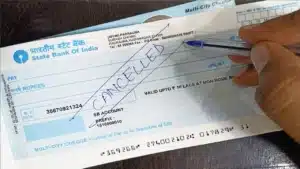
Key Elements on Your Cancelled Cheque:
- Bank Information: At the top, you’ll see your bank’s name and logo, followed by the branch address and contact details.
- IFSC Code: This 11-character code appears prominently, usually in a box or highlighted section, identifying your specific bank branch.
- Account Details: Your account number prints clearly, typically in the bottom section. Some banks use MICR encoding (special font numbers at the bottom).
- Cancellation Mark: The word “CANCELLED” should appear boldly across the middle between two parallel lines, making the cheque unusable for transactions while keeping all printed information visible.
- Account Holder Information: Your name appears exactly as registered with the bank, confirming account ownership. Some cheques also display the account type, such as savings or current.
- Security Features: Cheques include watermarks, special paper, or background patterns to prevent fraud and confirm the authenticity of the security features that remain visible even after cancellation.
Difference Between a Cancelled Cheque and a Blank Cheque
Aspect |
Cancelled Cheque |
Blank Cheque |
|---|---|---|
Definition |
A cheque with the word “CANCELLED” written across it. |
An unused cheque leaf with no details filled in. |
Signature |
Not signed. |
Usually not signed, but some mistakenly sign it (highly unsafe). |
Purpose |
Used for account verification (salary setup, loans, PF, SIPs, etc.). |
Given to someone to fill in later for withdrawal or payment. |
Risk Level |
Safe. Cannot be used for transactions. |
Extremely risky. If signed, it may allow fraudulent withdrawal of any amount. |
Security |
Like sharing a photocopy of your ID, which shows details but is unusable for fraud. |
Like giving someone a signed blank stamp paper can be misused easily. |
What Organisations Want |
An unsigned cheque with “CANCELLED” written across. |
Never required when asked for account verification. |
Main Difference |
Displays account details without giving access to funds. |
Gives power to access your funds if misused. |
Common Mistakes to Avoid with Cancelled Cheques
Never sign a cancelled cheque. Banks and organizations specifically request cancelled cheques because they want unsigned documents for verification purposes only.
Using damaged or old cheque leaves creates professional problems. Torn cheques, water-damaged leaves, or cheques with ink smudges look unprofessional and might get rejected. Organisations want clean, readable documents that clearly show your account information. Always use fresh cheque leaves from your current chequebook.
Writing additional information on cancelled cheques confuses the purpose. Some people add dates, amounts, or payee names, thinking it makes the document more official. This defeats the entire point. Keep it simple. Write only “CANCELLED” and leave everything else blank.
Handing over signed blank cheques instead of cancelled cheques creates massive security risks. This mistake happens when people don’t understand the difference between these documents. A signed blank cheque gives someone access to your entire account balance. Always verify what type of document someone actually needs.
Using a pencil to write “CANCELLED” creates problems because pencil marks can be erased. Someone could potentially remove the cancellation and misuse the cheque. Always use a pen with dark ink to ensure the cancellation mark stays permanent.
Folding or stapling cancelled cheques unnecessarily can damage important printed information. Organisations need to scan or photocopy these documents. Keep them flat and clean for easy processing.
Providing photocopies when originals are required causes delays. Some organisations accept photocopies, but others need original, cancelled cheques. Ask beforehand to avoid rejection and resubmission.
Safety Tips and Best Practices
- Safe Sharing Guidelines: Sharing a cancelled cheque is safe when done correctly. The document shows the same information already visible on your debit cards, bank statements, and online transactions, just in a format organisations can easily verify.
- Verify Recipients: Only provide cancelled cheques to legitimate organisations like banks, employers, insurance companies, and government agencies. These entities need your account details for official business and have secure systems to protect your information.
- Control and Monitor
– Give exactly the number requested, nothing more
– Keep records of where you submit them (organization, date, purpose)
– Copy your cancelled cheque before giving away the original
– Monitor your bank statements for any unauthorized activity after submission
Ask organisations to explain why they need the document and how they store it securely. Be suspicious of unknown people or companies requesting cancelled cheques without clear business reasons.
Conclusion
A cancelled cheque is one of the simplest yet most important documents in Indian banking. You now know it’s just a blank cheque leaf with “CANCELLED” written across it. No signature. No other details. Just that one word that makes it safe to share while proving your account ownership.
This knowledge saves you from confusion and delays in important situations. When your new employer asks for a cancelled cheque, you can prepare it in minutes. When you apply for a business loan or set up vendor payments, you understand exactly what banks and organisations need. You won’t make the dangerous mistake of providing signed blank cheques instead.
The process works because it balances security with verification needs. Organisations get the account information they need to process payments or transfers. You share this information safely without giving anyone access to your money. Your cancelled cheque shows your bank details, but it can’t be misused for unauthorised transactions.
Understanding this simple document prevents delays in important processes and allows you to handle requests confidently without security concerns.
Remember the basics. Use a fresh cheque leaf. Write “CANCELLED” clearly. Don’t sign it. Don’t fill in any other details. Submit it to legitimate organisations only. Keep records of where you provide it. That’s all there is to it.
FAQs
1. What is a cancelled cheque?
A cancelled cheque is a regular cheque leaf with the word “CANCELLED” written across it in bold. It shows your account details (account number, IFSC, bank name, and branch), but cannot be used for withdrawing or transferring money.
2. Does cancelling a cheque affect my account balance or operations?
Not at all. Cancelling a cheque doesn’t affect your account in any way. It’s just a way to make that cheque leaf unusable for payments while keeping your banking details visible for verification.
3. Do I need to sign a cancelled cheque?
No. You should never sign a it. Signing it creates a risk of misuse. The whole point is to leave it unsigned and simply write “CANCELLED” across.
4. Can someone misuse my cancelled cheque?
Not really. Since it has no signature or transaction details, nobody can withdraw money with it. But to stay safe, only share cancelled cheques with trusted organisations (banks, employers, insurance companies, PF offices).
5. Why do organisations ask for a cancelled cheque?
They need to confirm your account details before crediting or debiting money. Common cases include:
- Salary account setup
- Loan disbursement and EMI deductions
- Mutual fund or SIP registrations
- Insurance claim settlements
- EPF transfers or withdrawals
6. Is a cancelled cheque mandatory for PF (Provident Fund) withdrawal or transfer?
Yes, the EPFO often asks for it to verify your bank account before transferring or settling your PF balance. It helps ensure your PF amount goes into the right account.
7. Can I use a photocopy or scanned copy of a cancelled cheque?
Some organisations accept photocopies or scanned images, especially for online processes. But many still require the original cancelled cheque. Always confirm what the organisation needs before submitting.
8. What’s the difference between a cancelled cheque and a blank cheque?
- A blank cheque is an unsigned cheque with no details filled in, which can be risky if misused.
- A cancelled cheque has “CANCELLED” written across and is unusable for payments. It’s safe for verification purposes.
9. Can I use a cheque from a joint account as a cancelled cheque?
Yes, you can. But if the organisation requires a cheque from your individual account, you’ll need to submit that instead. Always check the requirements carefully.
10. What if I don’t have a chequebook? How do I give a cancelled cheque?
If your account type doesn’t come with cheques (for example, some salary or digital bank accounts), you can request a chequebook from your bank. In some cases, organisations may accept alternatives like:
- Bank passbook copy
- Bank statement with account details
- IFSC + account details on bank letterhead.

